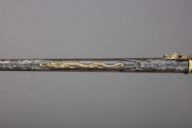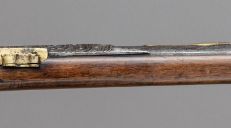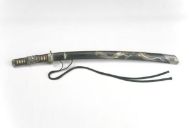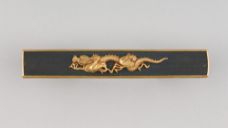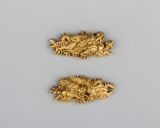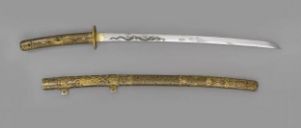Adding that Japanese touch
The gun is, like other muskets, made of wood and steel, and it resembles many other matchlock guns in its basic shape and functioning. What makes this gun unique is its beautiful decoration. The decoration is composed of a clouds motif on the two extremities towards the stock and the barrel, with a gilded dragon at the center. We can see how the clouds are flowing and how the dragon stretches out beautifully and in great detail.
There is a very interesting detail to note about the decoration: it is not engraved on the barrel itself, but rather it was engraved on a steel sheet, which was then applied onto the barrel. If you look closely, you can see the gap between the barrel and the steel sheet!
Bashford Dean, the Honorary Curator of Arms and Armor at the Metropolitan Museum of Art (MET) in New York in the early 20th century, as well as contemporary MET curators, noticed this when handling the gun[cf]. Additionally, they were also able to tell that the barrel does not appear to be of Japanese make, while the opposite can be said for the decoration, as well as the style of the stock and the butt end of the gun. One of the hypotheses, supported by Bashford Dean and now being explored by researchers, is that the barrel of the gun may have been made in Portugal, and was then imported, assembled and decorated in Japan.
Needless to say, the dragon is without a doubt a fundamental decorative motif in Japanese art, and strongly connected to the world of the warriors. We can find dragons on many Japanese arms and armors, one main example being samurai swords: all we need to do is to look at sword scabbards and sword fittings such as hand guards (tsuba), utility knives (kozuka), and ornaments (menuki). Dragon decorations are not only limited to the swords' mountings and can sometimes also be found engraved on the blade.
In this way the matchlock gun combines two traditions of craftsmanship: the barrel of the gun embodies a new, foreign technology introduced from Europe, but that once introduced in Japan become connected to local tradition of style and beauty, and was modified by local craftsmanship.
